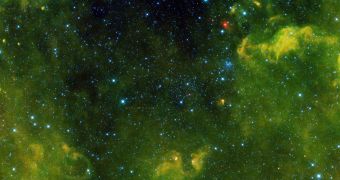A NASA infrared telescope currently being used to detect and track near Earth objects, or NEO, was able to discover no less than 857 minor bodies in our planet's vicinity over the past month. The finding gives researchers a better idea of just how common these objects actually are.
NEOWISE is based on the NASA WISE observatory, which was launched a couple of years back to create full maps of the night sky in infrared wavelengths. After the spacecraft depleted its coolant supplies, it was put in hibernation mode, in early 2011.
In 2012, NASA experts began drafting studies to analyze the potential impacts on science that reawakening WISE could have. They were able to determine that despite its loss in IR sensitivity, the telescope could still be used to identify NEO around our planet.
At the end of 2013, the telescope began snapping its first image, and it has not stopped since. Mission controllers at the NASA Jet Propulsion Laboratory (JPL) are now presenting its first results, and they truly look impressive – the spacecraft has detected 857 minor bodies in the solar system in just 25 days.
Among these objects are 22 NEO located very close to Earth, as well as 4 previously-unknown comets. All of these findings were made even before NEOWISE had passed its recent, post-restart survey readiness review. To date, various telescopes have detected around 10,500 NEO.
JPL experts expect that the NEOWISE mission will contribute to doubling that number within the next couple of years. This is very important because NEO are a very dangerous class of objects in the solar system, and we currently do not have too many telescopes dedicated to finding them.
The goal in NEO tracking studies is to create a comprehensive database of as many of these objects as possible, and to calculate their trajectories as accurate as possible. Ongoing efforts in this direction will enable humans to stay prepared in case an NEO starts heading this way, and will allow us a faster response time in developing ways of handling this type of threat.

 14 DAY TRIAL //
14 DAY TRIAL //